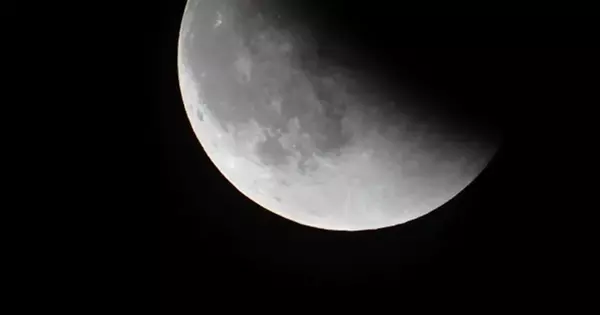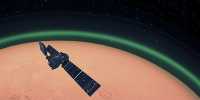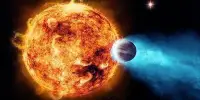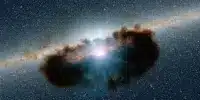Researchers discovered that the moon was highly porous early in its history, which was most likely caused by early, massive impacts that shattered much of the crust. They arrived at their conclusions using NASA’s GRAIL mission simulations and data.
The early solar system resembled a game of space rock dodgeball around 4.4 billion years ago, as massive asteroids and comets, and later, smaller rocks and galactic debris, pummeled the moon and other infant terrestrial bodies. This epoch ended approximately 3.8 billion years ago. This turbulent period on the moon left behind a heavily cratered face and a cracked and porous crust.
Now MIT scientists have found that the porosity of the moon’s crust, reaching well beneath the surface, can reveal a great deal about the moon’s history of bombardment. In a study appearing in Nature Geoscience, the team has shown through simulations that, early on in the bombardment period, the moon was highly porous — almost one-third as porous as pumice. This high porosity was likely a result of early, massive impacts that shattered much of the crust.
Scientists assumed that a constant barrage of impacts would gradually increase porosity. Surprisingly, the team discovered that nearly all of the moon’s porosity formed quickly as a result of these massive impacts, and that the continued bombardment by smaller impactors actually compacted its surface. Later, smaller impacts squeezed and compacted some of the moon’s existing cracks and faults.
The researchers estimated that the moon experienced twice as many impacts as can be seen on the surface based on their simulations. This estimate is lower than previous estimates.
“Previous estimates put that number much higher, as many as ten times the impacts we see on the surface, and we’re predicting fewer impacts,” says study co-author Jason Soderblom, an Earth, Atmospheric, and Planetary Sciences research scientist at MIT (EAPS). “This is significant because it limits the total material brought to the moon and terrestrial bodies by impactors such as asteroids and comets, and it places constraints on the formation and evolution of planets throughout the solar system.”
The study’s lead author is EAPS postdoc Ya Huei Huang, who collaborated with researchers from Purdue University and Auburn University.
We know the moon was so bombarded that what we see on the surface is no longer a record of every impact the moon has ever had, because at some point, impacts were erasing previous impacts.
Jason Soderblom
A porous record
In the team’s new study, the researchers looked to trace the moon’s changing porosity and use those changes below the surface to estimate the number of impacts that occurred on its surface.
“We know the moon was so bombarded that what we see on the surface is no longer a record of every impact the moon has ever had, because at some point, impacts were erasing previous impacts,” Soderblom says. “What we’re finding is that the way impacts created porosity in the crust is not destroyed, and that can give us a better constraint on the total number of impacts that the moon was subject to.”
The team used measurements from NASA’s Gravity Recovery and Interior Laboratory, or GRAIL, an MIT-designed mission that launched twin spacecraft around the moon to precisely map the surface gravity, to trace the evolution of the moon’s porosity.
The gravity maps from the mission have been converted into detailed maps of the density of the moon’s underlying crust by researchers. Scientists have been able to map the current porosity of the lunar crust using these density maps. These maps show that the regions surrounding the youngest craters are highly porous, whereas the regions surrounding older craters are less porous.
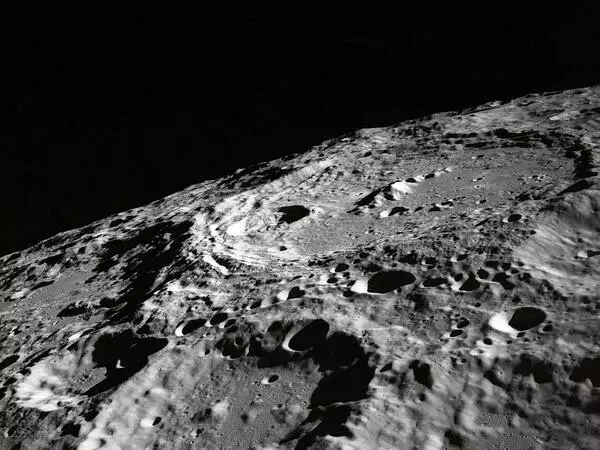
Crater chronology
In their new study, Huang, Soderblom and their colleagues looked to simulate how the moon’s porosity changed as it was bombarded with first large and then smaller impacts. They included in their simulation the age, size, and location of the 77 largest craters on the moon’s surface, along with GRAIL-derived estimates of each crater’s current-day porosity. The simulation includes all known basins, from the oldest to the youngest impact basins on the moon, and span ages between 4.3 billion and 3.8 billion years old.
The team used the youngest craters with the highest current-day porosity as a starting point for their simulations to represent the moon’s initial porosity during the early stages of the lunar heavy bombardment. They reasoned that older craters formed in the early stages would have been highly porous at first but would have been compacted and reduced in porosity over time due to further impacts. Younger craters, on the other hand, formed later and would have received fewer, if any, subsequent impacts. The underlying porosity of the moon would then be more representative of its initial conditions.
“We use the youngest basin on the moon that hasn’t been subjected to too many impacts as a way to start as initial conditions,” Huang says. “We then use an equation to fine-tune the number of impacts required to transition from that initial porosity to the more compacted, present-day porosity of the oldest basins.”
The 77 craters were studied in chronological order based on their previously determined ages. The team calculated the amount by which the underlying porosity changed for each crater in comparison to the initial porosity represented by the youngest crater. They assumed a bigger change in porosity was associated with a larger number of impacts, and used this correlation to estimate the number of impacts that would have generated each crater’s current-day porosity.
These simulations revealed a clear pattern: At the start of the lunar heavy bombardment, 4.3 billion years ago, the crust was highly porous – roughly 20% porous (by comparison, the porosity of pumice is about 60 to 80 percent). Closer to 3.8 billion years ago, the crust became less porous, and it now has a porosity of about 10%.
This change in porosity is most likely the result of smaller impactors compacting a fractured crust. Based on this porosity shift, the researchers estimate that the moon experienced roughly twice as many small impacts as is visible on its surface today.
